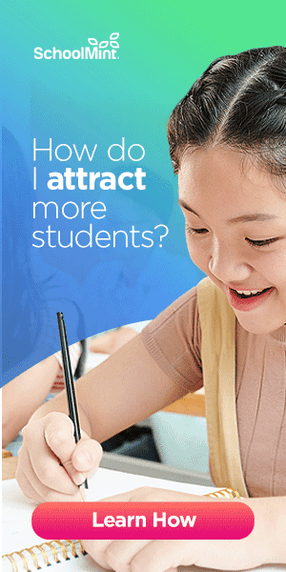Special Considerations of Instructional Coaching for Middle School Teachers
Learn why instructional coaching for middle school teachers has special considerations.
Following up on my previous blog about overcoming teacher resistance in instructional coaching, I want to dive in further today by discussing the special considerations of instructional coaching at the secondary level.
The Special Case of Secondary Schools
Secondary teachers often cite the fact that a coach is a “disciplinary outsider” and does not have relevant experience in a specific content area, which thus disqualifies them as a coach.
Gibbons and Cobb (2017) suggest coaches must engage in their own learning to understand the specific standards and curricular design and engage in inquiry-based activities to overcome this limitation.
Wilder (2014) examined the impact of an instructional coach who is a “disciplinary outsider” using literacy-based coaching practices, and it was found that the coach’s limited experience in the content area (in this case algebra) could provide great insights around specific student learning needs.
 Wilder posited that experienced secondary teachers may not be aware of the “difficulties of the content, especially when applying a literacy lens.” And Wilder suggests that the lack of content knowledge could, in fact, strengthen the partnership as the instructional coach is able to set aside their ego and depend on the knowledge and experiences of the cooperating teacher with regards to the content, they collaborated more effectively and leveraged each other’s expertise to a greater degree.
Wilder posited that experienced secondary teachers may not be aware of the “difficulties of the content, especially when applying a literacy lens.” And Wilder suggests that the lack of content knowledge could, in fact, strengthen the partnership as the instructional coach is able to set aside their ego and depend on the knowledge and experiences of the cooperating teacher with regards to the content, they collaborated more effectively and leveraged each other’s expertise to a greater degree.
Beyond the three general interaction and relationship coaching approaches outlined by Knight (2020) noted above, the literature suggests that there are four roles or areas of impact for coaches at the secondary level (e.g., curriculum specialist, instructional specialist, classroom supporter, and data coach) that are most effective in achieving positive outcomes.
However, Matsumura et al. (2012) found that only 30% of teachers received coaching training in all these areas, thus it was suggested to focus only those coaching roles that clearly align to district goals to enhance a coach’s efficacy and reduce resistance.
- According to Deussen et al. (2007), districts struggle to appropriately assign roles among secondary instructional coaches, leading to feelings of low self-efficacy in their coaching role.
- Gibbons and Cobb suggest that instructional coaches leverage their cooperating teachers’ content knowledge and engage them in a discussion that has the teacher justify and explain their content, which provokes them to honestly evaluate their curriculum rather than delivering it in a perfunctory manner.
- Killion and Harrison (2017) substantiated the importance of this role with a curriculum focus as it helps the instructional coach “establish their mutual, trusting relationship with secondary teachers.”
Although the other roles noted above are useful in some contexts, Kane and Rosenquist (2019) found they do not have the teacher continually reevaluate their curriculum design and their instruction.
Collaborative Strategic Reading in Secondary Schools
Collaborative Strategic Reading (CSR) is a research-based approach that facilitates students’ reading comprehension (Klingner et al. 1998, 2012) that has been shown to greatly increase reading comprehension skills and dealing with complex information. The implementation of CSR has students working collaboratively in small, heterogeneous groups to read and understand complex, content-area expository and narrative text.
CSR can be used in science, social studies, and language arts classes at the secondary level. Gross (2010) reported that literacy-based instructional coaching, such as CSR, received more praise from secondary educators than traditional professional development methods and can thus reduce resistance. This approach to instructional coaching engendered honest and open discourse about the curriculum and created a more collaborative building culture.
Jacobs, Wang & Boardman (2017), in a study of teacher coaching resistance using CSR at the secondary level, found that:
- 80% of teachers were receptive to coaching.
- 20% were considered resistant.
- The majority of resistant teachers had 10 or more years of experience.
- Two-thirds of these resistant teachers were science teachers.
It was hypothesized that, after many years in the classroom, a percentage of these more experienced teachers may be uninterested in changing their instructional approaches and routines and may not buy into the highly specific nature of CSR (Zimmerman 2006).
Wepner et al. (2014) suggest literacy-based instructional coaches to develop expertise in one specific content area to thoroughly understand content-specific standards and have experience working with adolescents increase efficacy and increase buy-in from secondary educators.
Coaching in Secondary Professional Learning Communities (PLC)
Another important aspect of addressing teacher resistance in instructional coaching at the secondary level is to consider whether coaches should meet with teachers individually or in groups such as a PLC.
PLCs have been around for more than 20 years, and there are several iterations.
- At the elementary level, teachers typically work in grade-level teams.
- At the secondary level, teachers may work in a variety of configurations, such as grade-level, content-specific, or based on instructional goals.
While both individual or group approaches have their merits, time and cost are two critical factors that must be considered for effective implementation, especially at the secondary level (Kniffen, 2020).
When working with a PLC at the secondary level, a coach can expand a teacher’s access to resources and content/course-specific strategies.
- According to Wilder (2014), working in a PLC broadens disciplinary knowledge and teaching experience among the team and relieves the pressure off the instructional coach to be sagacious.
- Killion and Harrison (2017) report that PLC and group work also improves teachers’ openness to new strategies.
- Roy (2019) and Many (2018) suggest that instructional coaches work directly with PLCs at the secondary level so coaches can optimize their time, capitalize on other teachers’ content knowledge and experience, and promote collaboration.
As research on instructional coaching at the secondary level continues to develop, districts must also continuously assess their program (Kniffen, 2020). Districts must be careful to be transparent and try to avoid constant changes to the coaching program, which can cause resistance to the reform.
Kane and Rosenquist (2019) further suggest that instructional coaches are directly involved in collaboration of the design of the program with district leaders. A collaborative approach to creating a coaching program at the secondary level ensures that all teachers impacted receive training and they can provide feedback.
At the secondary level, it must be clearly defined how the coach will function in the secondary environment and PLC and that this is specified for teachers (Kniffen, 2020).
Understanding the Change Process
Elish-Piper et al. (2008) suggest coaches use the Concerns-Based Adoption Model (C-BAM) to identify where teachers are in the change process, which can help coaches determine the types of support to provide by understanding the stage of change.
The C-BAM (outlined in Table 1) is a useful tool for coaches because it identifies typical steps that teachers go through as they face changes in their schools and classrooms.
By considering each teacher’s stage of concern, coaches can address the questions and issues that are most relevant for a teacher at that stage of the change process.
In some stages, the coach will supply information, suggest options, and guide the teachers. In other stages, the coach may merely ask questions and paraphrase responses to build awareness.
Instructional Coaching Software Supports
Implementing software that is designed to support a quality coaching program can be another important factor in addressing teacher resistance.
Software platforms such as SchoolMint Grow provides several functionalities that can help with teacher acceptance, transparency, efficiency, and efficacy of the coaching program:
- The coaching process, rubrics, and expectations are clearly defined and accessible so there is no uncertainty.
- Coaching and teacher evaluations are completely separated so threats to competence are minimized.
- Teachers know exactly what to expect from the coaching interactions so workload demands are transparent.
- Follow ups, goal setting and approaches to coaching are specified so there is better chance of model match with coach and teacher.
- Growth and improvement are measured and visualized so teachers are reinforced for engaging in coaching.
- The use of video enhances teachers understanding and guides change.
Conclusion
Regardless of the instructional coaching approach or model, not all teachers are receptive to coaching due to a variety of factors.
The fact is some teachers prefer not to engage in the coaching process, which demands communication, collaboration, and — most importantly — change. Having identified effective coaching practices does not necessarily guarantee the coaching will be well-implemented.
Research suggests that how a program or innovation is put into place affects the degree to which the program/innovation achieves its intended goals (Cantrell & Hughes, 2008; Fixsen, Naoom, Blase, Friedman, & Wallace, 2005; Greenhalgh, Robert, Macfarlane, Bate, & Kyriakidou, 2004).
The implementation of a successful coaching program should thus include processes to directly address teacher resistance.
Ready to learn more? Click the banner to get in touch!
Share this
You May Also Like
These Related Stories

10 Reasons Teachers Resist Instructional Coaching and What You Can Do

A Conversation on Coaching: Interview with Dr. Jim Knight



